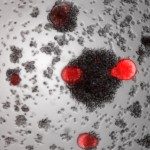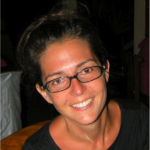Lien vers Pubmed [PMID] – 16605061
Parasite 2006 Mar;13(1):3-10
The presence of the filarial genus Litomosa in Malagasy bats is demonstrated by the finding of L. goodmani n. sp. from Miniopterus gleni and Litomosa sp. (male unknown) from M. manavi, both in the Special Reserve of Ankarana. These materials are compared to the 22 Litomosa species, including two Indian species originally placed in the genus Litomosoides, L. fotedari (Gupta and Trivedi, 1989) n. comb. and L. tewarii (Gupta and Trivedi, 1989) n. comb., and the new taxon L. seurati n. sp. (= L. beaucournui Bain, 1966 pro parte), type-host Rhinolophus ferrum-equinum, Algeria, distinguished by the narrow area rugosa and the female caudal extremity with two conspicuous points, instead of several small ones. The Malagasy material belongs to a group of species close to the type, L. filaria, which have a male area rugosa composed of cuticular bosses and microfilariae folded within the sheath, and which are parasitic in Vespertilionidae, Hipposideridae and Rhinolophidae from Africa and Europe. The two Malagasy species resemble L. seurati n. sp., L. beshkovi Jancev, 1971, L. chiropterum Ortlepp, 1932, L. adami Petit, 1980 and L. ottavianii Lagrange et Bettini, 1948, with the enlarged third segment of the buccal capsule. L. goodmani n. sp. is distinct with its small size and female caudal extremity with a single point, which is suppressed in old mature worms; the females of Litomosa sp. have two conical points. Relationships among Litomosa species appear to be dependent upon both the chiropteran host groups and the geographical region.

